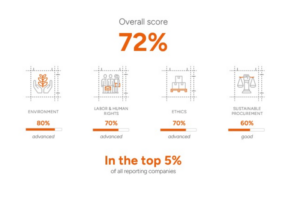How to ensure a successful library relocation
Whether you are relocating your collections or journals across your campus or estate, moving to a new building or refurbishing an existing building, a library move is a challenging undertaking with its own unique requirements. Yet, each move requires consideration of the same major issues that will determine the success or otherwise of your relocation.
The importance of advance planning
Having moved hundreds of libraries, one thing we would advise is that you can never plan enough for a library relocation.
Extensive pre-move planning meetings should form the backbone of your move. We recommend involving all staff in these meetings – even a new starter could bring something to light that will help make the move run more smoothly and minimise downtime.
Considerations at this stage include:
Scoping the job
Are you just moving the collections or moving the shelves, furniture, IT equipment and other specialist equipment as well?
Minimising downtime
How do you want your contractor to work to minimise your downtime? Do you want them to work out of hours, at night or at weekends? Or will they need to close down one range at a time to work around library users during opening hours?
Moving specialist equipment
If you are moving specialist equipment such as photocopiers that are leased rather than owned, you will need to obtain permission from the leasing company. If they are satisfied with the capabilities of your contractor they may give approval for them to move the equipment. Alternatively, you will need to arrange with the leasing company to move the equipment so as not to invalidate your leasing agreement.
Storage requirements
Do you have any temporary storage requirements during your move? Does your contractor have water-tight, temperature-controlled, secure storage? Do you require shelves stored or just collections?
During the planning process, your relocation contractor should liaise closely with you, attending pre-move planning meetings with you and detailing how they will work alongside your team and around library users to get the job done as efficiently and economically as possible. As part of the planning stage, you should expect to have confirmed the labelling system, staffing levels, move programme including linear metres being moved each day, and timeframes of your move.
Call in the specialists
Every library move is unique but at the same time, there is no compensating for lack of experience. We recommend working with contractors who know what they are doing and have moved collections like yours many times before.
Considerations when appointing a contractor include:
Does the contractor have experience in sequential packing and what labelling system will they use?
A specialist contractor will know the Dewey, Binary and Library of Congress classification systems and ensure that collections are packed in strict sequence in line with your chosen system.
Do they have the right equipment and vehicles for protecting, moving and tracking your collections?
A specialist contractor will have the right crates in which to pack the length of a shelf and tail-lift liveried vehicles with vehicle tracking.
Are the relocation crew trained in library systems and will they be consistent throughout the project?
The right contractor will employ a fully trained team that stays in place for the duration of your project and not use agency staff that change daily.
Have you been appointed a move manager and do they have the right experience?
Every library move requires a move manager or consultant who has done the job many times over.
What are their methodologies for relocating collections?
A specialist contractor will have comprehensive and clearly defined methodologies for moving library collections that they will share with you.
Can the contractor meet all your relocation requirements?
Appointing a contractor with the expertise and specialist teams to meet all your move requirements will ensure that your collections end up in the right order, your furniture and artefacts arrive in one piece, your IT equipment works from day one and your move remains on track.
How will you identify the crew onsite?
A professional contractor will ensure your relocation crew are easily identifiable on-site with branded clothing. Whilst you should expect a competitive quote from a contractor, the cheapest is not always best. You need to have confidence in your contractors’ capabilities to move your collections safely, securely, on time and on budget.
Whilst you should expect a competitive quote from a contractor, cheapest is not always best. You need to have confidence in your contractors’ capabilities to move your collections safely, securely, on time and on budget.
Related stories
Sustainability remains a top business priority for Crown in the UK & Ireland and globally; we are therefore delighted to have launched our 2023 UKI Sustainability Report!
Crown are delighted to announce that we have been awarded Gold by EcoVadis in 2024 for the second time, reflecting our commitment to and progress in becoming a responsible business.
We supported both Landaid and the YMCA with cardboard boxes for their annual sleepout events. We were incredibly pleased to deliver 1,100 boxes as well as bring along a group of volunteers to the YMCA event.




















